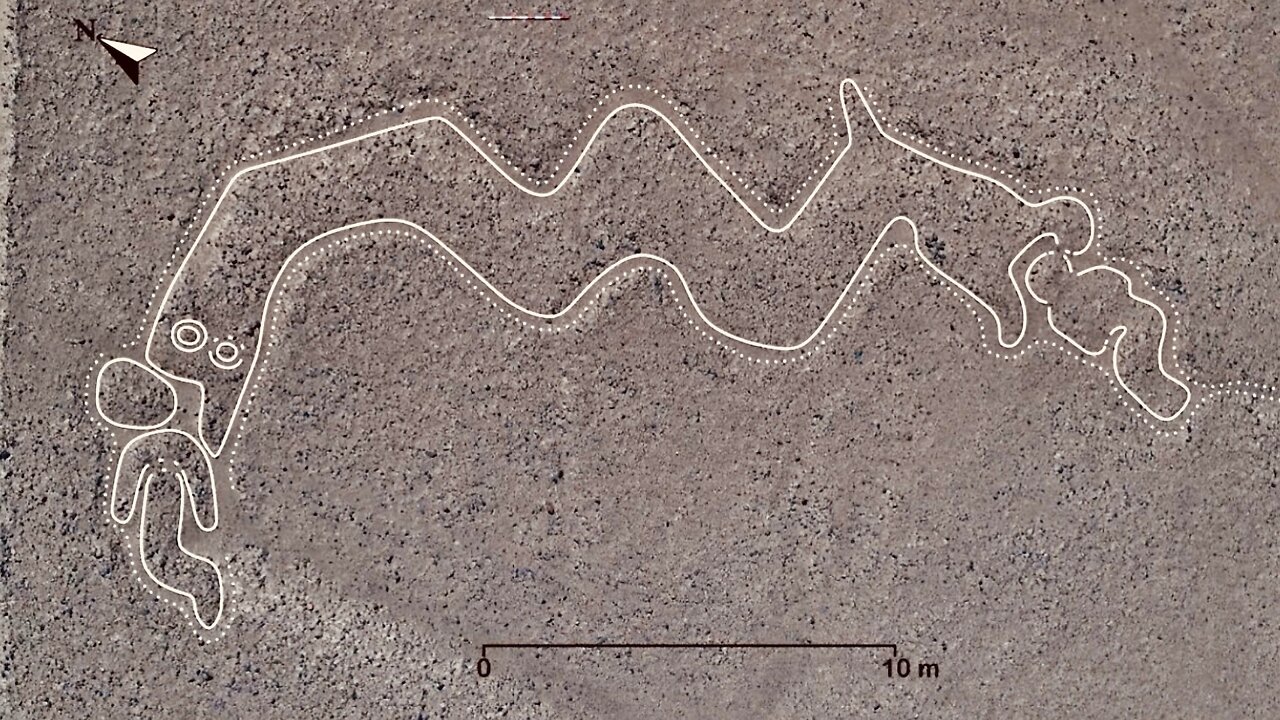Premium Only Content

AI Technology Discovers 143 New Nazca Geoglyphs Lost for 2,000 Years
With the help of satellites and AI, researchers spotted a trove of new 'geoglyphs' - earth drawings - depicting animals, people, and objects. Japanese researchers have used machine learning and artificial intelligence to identify 143 new Nazca Lines, also called geoglyphs, in Peru. Among the numerous new glyphs was one that was discovered entirely by AI, the first time to happen in the world. The New York Times reports that the team of researchers used satellite photography, 3D imaging, and AI to find the ancient geoglyphs that were impressed into the ground in a desert plain around 100 B.C. by Nazcas.
A press release from Yamagata University explains that the team used IBM’s Power Systems servers “in an aim to understand Nazca Lines as a whole.” Researchers also utilized AI tech from the IBM Thomas J. Watson Research Center in New York to test whether or not AI could find new Nazca Lines.
And it worked. The team configured a machine learning program with an AI model which found a new glyph depicting a 16-foot tall “humanoid figure standing on two feet." In their effort to examine whether or not the AI could discover new Nazca Lines, the research team shares that they “introduced the capability to process large volumes of data with AI,” which included hi-res aerial images “at high speeds.”
The Nazca people lived near Peru's southern coast over 2,000 years ago. While the creation of the Nazca Lines has been this the Nazca's claim to fame, this pre-Inca culture was also known for its pottery and textiles.
The Nazca lines themselves have caused speculation about what exactly they are and what purpose they serve. While some fictional works suggest that Nazca Lines might have been landing strips for alien aircraft, archaeologists suggest that they were ritual sites, a form of irrigation, or some form of ancient cosmic maps.
In 1994, the Nazca Lines were designated as a UNESCO World Heritage site, but that hasn't stopped people from defacing them. In 2014, Greenpeace activists left their footprints near the hummingbird glyph as they unveiled a sign calling for the use of renewable resources. Then, in 2018, a trucker intentionally drove his rig off-road and over some of the lines leaving behind three damaged "straight-line geoglyphs."
Masato Sakai, a professor of cultural anthropology who led the research effort, is concerned with the preservation of the Lines and hopes that these new discoveries will help protect them.
“The most important point is not the discovery itself...If [the lines] become clearly visible, they will be protected as important cultural heritages” says Sakai. The University says it will work with UNESCO and the Ministry of Culture in Peru to help preserve these newly discovered sites.
Music: Svadhisthana (Original Mix) by Dhruva Aliman
Amazon - https://amzn.to/3ex2DEb
https://music.apple.com/us/artist/dhruva-aliman/363563637
https://dhruvaaliman.bandcamp.com/album/neptunes-overtone
http://www.dhruvaaliman.com/
Spotify - https://open.spotify.com/artist/5XiFCr9iBKE6Cupltgnlet
#nazca #ancientaliens #ai
-
 49:45
49:45
Knowledge Land
10 months agoFuture War Technology - Armies of Tomorrow
400 -
 1:39:44
1:39:44
HELMET FIRE
8 hours agoDEADROP IS BACK!
115K6 -
 10:03
10:03
Tundra Tactical
10 hours ago $13.04 earnedBrandon Herrera Vies Bid for ATF Director!
71.1K14 -
 22:01
22:01
DeVory Darkins
1 day ago $32.26 earnedHakeem Jeffries SHUTS DOWN The View as Matt Gaetz Speaks out
62.4K107 -
 2:02:54
2:02:54
Mally_Mouse
9 hours agoLet's Play!! - Spicy Saturday
44.2K1 -
 1:33:06
1:33:06
Slightly Offensive
9 hours ago $26.75 earnedAre You Ready for What's Coming Next? | Just Chatting Chill Stream
63.6K39 -
 32:10
32:10
MYLUNCHBREAK CHANNEL PAGE
1 day agoThe Gate of All Nations
138K61 -
 13:07
13:07
Sideserf Cake Studio
14 hours ago $3.45 earnedIS THIS THE MOST REALISTIC SUSHI CAKE EVER MADE?
56.6K4 -
 21:08
21:08
Clownfish TV
1 day agoElon Musk Tells WotC to BURN IN HELL for Erasing Gary Gygax from DnD!
44.9K15 -
 48:22
48:22
PMG
10 hours ago $10.11 earned"IRS Whistleblowers Speak Out on Biden Family with Mel K In-Studio"
37.2K24